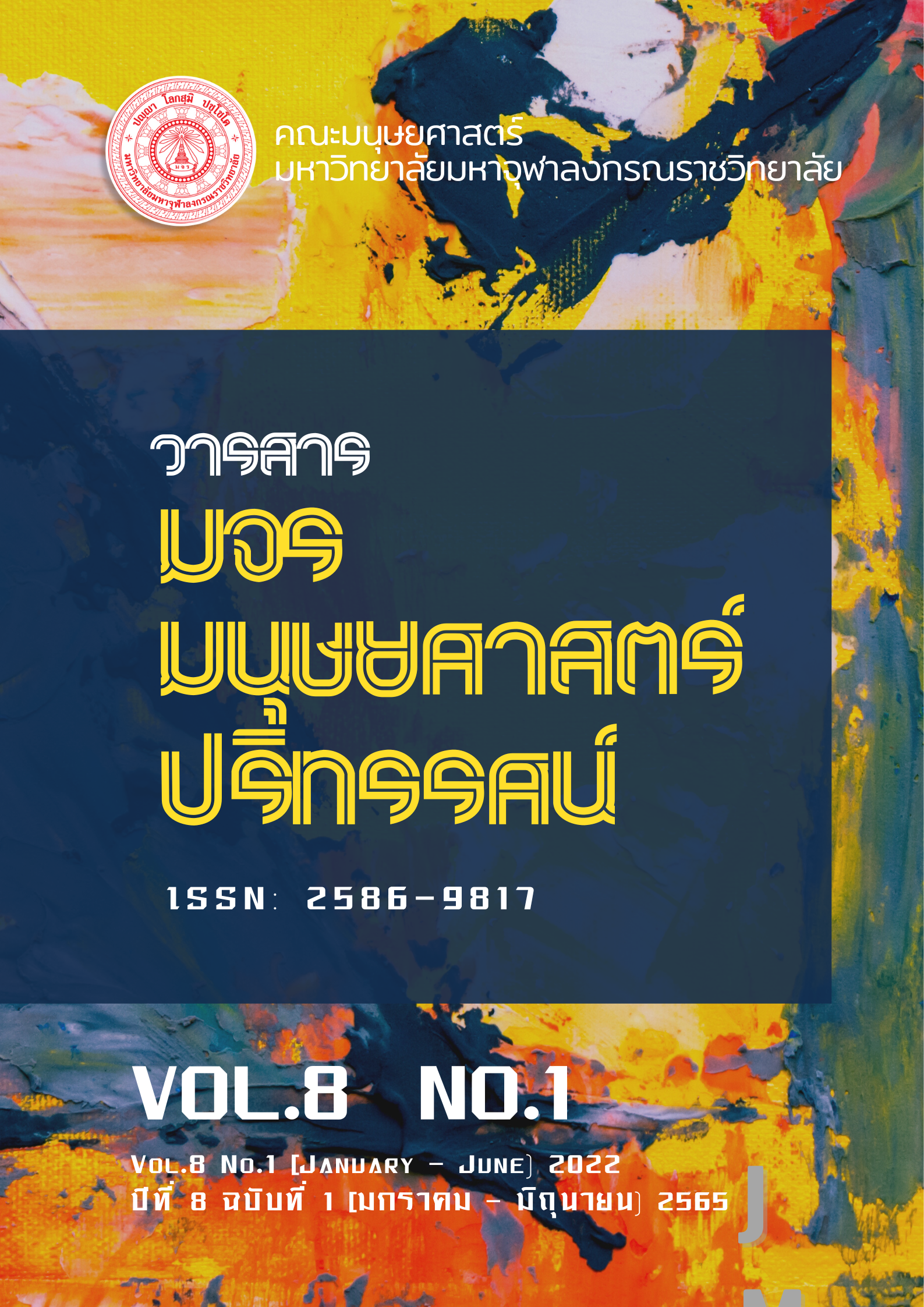Cultural Terms and Translation Strategies in Dissertation Abstracts of a Buddhist University
คำสำคัญ:
-บทคัดย่อ
-
เอกสารอ้างอิง
Aungsuwan, W. (n.d). Cultural Word and Phrase Translation from Thai into English in Buddhist books: A Case Study of Vajiramedhi’s work. Retrieved 20 April 2020 from http://icts.utcc.ac.th/wp-content/uploads/2014/12/CulturalWord-and-Phrase-Translation-from-Thai-into-English-in-Buddhist-books.pdf
Baker, M. (1992). In other words. New York: Clays Ltd., St Lves Plc.
Eugene, N. and Russell, T. (1969). The theory and practice of translation. Leiden: Brill.
Krai-on, S. (2013). Strategies and Techniques for Translating Thai Cultural Words Into English in the Thai Novel Four Reigns. Independent Study. Department of Western Languages, Graduate School, Silpakorn University.
Larson,M. (1984). Meaning-Based Translation: A Guide to Cross-Language Equivalence. Lanham and New York: University Press of America.
Literacy Education Online Writing Abstracts. (2008). Retrieved October 7, 2008, from http://leo.stcloudstate.edu/bizwrite/abstracts.html
Mahachulalongkornrajavidyalaya University, (2012). The Chronology of Mahachulalongkornrajavidyalaya University. Retrieved May 9, 2022, from http://mcupress.mcu.ac.th/En/history.php.
Newmark, P. (1988). Approaches to Translation. Hertfordshire: Prentice Hall.
Nida and Taber. (1982). the Theory and Practice of Translation. Leiden: E.J. Brill.
Ordudari, M. (2007). Translation procedures, strategies and methods. Retrieved 30 June 30 from https://translationjournal.net/journal/41culture.htm. ZC0aP5ved4pKrDdwdInVlW/view
Pinmanee,S. (2019). Language, Culture and Translation: Thai-English. Bangkok: Chulalongkorn University Press.
Pokasumrit, P. (2012). Cultural substitution in English to Thai translation. National Institute of Development Administration. Bangkok.
Saibua, S. (1999). Translation Principles (7th Publishing). Bangkok: Thammasat University.
Vinay,P. & Darbelnet,J. . A Methodology for Translation. In L. Venuti (Ed.), The Translation Studies Reader. London: Routledge.

ดาวน์โหลด
เผยแพร่แล้ว
รูปแบบการอ้างอิง
ฉบับ
ประเภทบทความ
หมวดหมู่
สัญญาอนุญาต
ลิขสิทธิ์ (c) 2022 วารสาร มจร มนุษยศาสตร์ปริทรรศน์

อนุญาตภายใต้เงื่อนไข Creative Commons Attribution-NonCommercial-NoDerivatives 4.0 International License.





